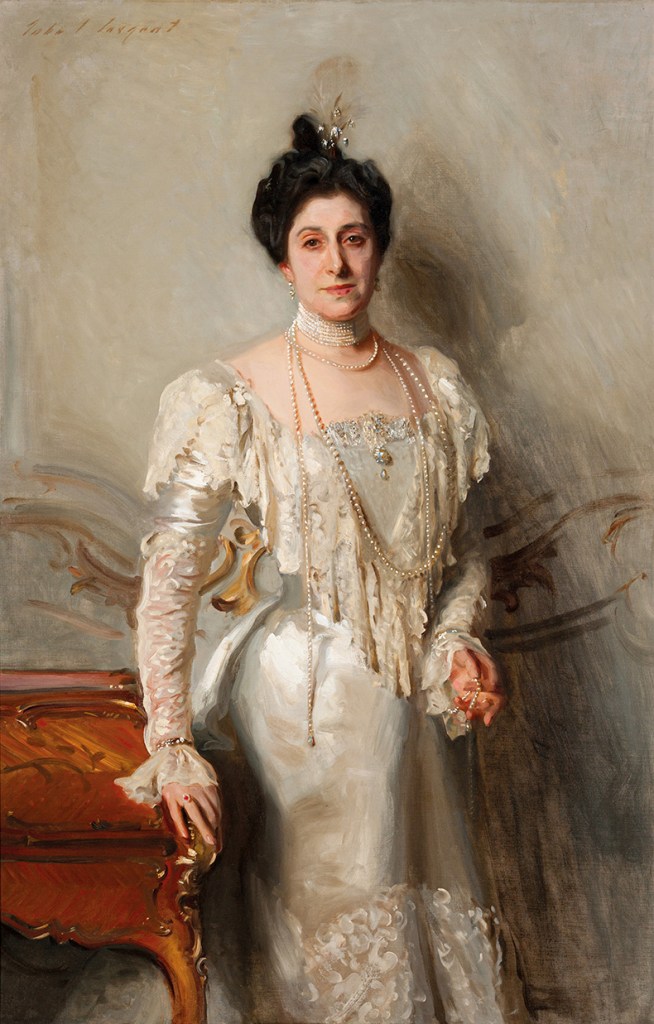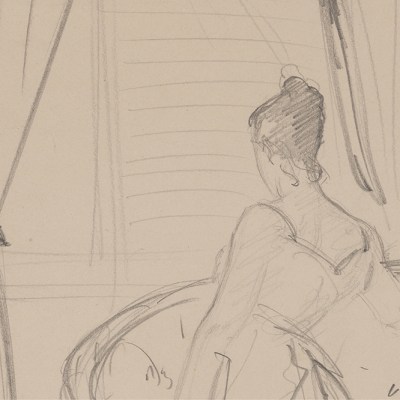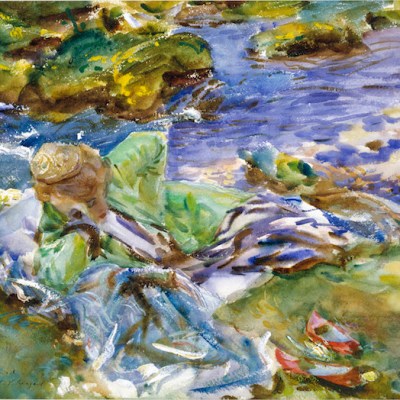This review of Family Romance: John Singer Sargent and the Wertheimers by Jean Strouse (Farrar Straus Giroux/Manchester University Press) appears in the February 2025 issue of Apollo. Preview and subscribe here.
The immediacy of Sargent’s portraits has been praised by countless critics. It has also inspired intrigue. Who are these people who, although wearing the most opulent accoutrements of another age, feel as familiar as a haughty great-aunt, pensive friend or conceited colleague? Several biographers have tried to find out, taking a Sargent painting as the starting point for a lengthy enquiry into the life of a subject who, though admired or infamous in their day, may otherwise fail to arouse much interest in ours. In Strapless: John Singer Sargent and the Fall of Madame X (2004), Deborah Davis fed our abiding appetite for a high society scandal, while Sargent’s Women (2017) by Donna M. Lucey delved into the lives of four otherwise unconnected sitters. But, aside from piquing our curiosity, is the portrait itsel f ever a useful source of information?
f ever a useful source of information?
Taking as her subject the Wertheimer portraits, in Family Romance, Jean Strouse (a biographer of Alice James and J.P. Morgan) has chosen a body of work that proves to be surprisingly strong in biographical insight. The set of 12 paintings were commissioned from Sargent by the leading London art dealer Asher Wertheimer, between 1898 and 1908. They include one portrait of Asher (1898), two of his wife Flora (1898 and 1904), single portraits of his sons Alfred (c. 1901) and Edward (1902), of his daughters Hylda (1901), Ena (1904), Almina (1908) and Betty (1908), and two three-person portraits of the younger children Essie, Ruby and Ferdinand (1902) and Hylda, Almina and Conway (1905). Finally, gracing the book’s cover is the best known of the series, a double portrait of Ena and Betty (1901). The painter had so many works hanging in the Wertheimer house that it’s little wonder Asher’s dining room was dubbed ‘Sargent’s Mess’.
Together the paintings have an impressive narrative power, reflecting the triumphs and tragedies that the Wertheimers experienced at the turn of the century. This must be owed in part to Sargent’s intimate friendship with the family. Take, for example, the heavy-lidded expression of second son Alfred, who was almost disowned by the family over his aspirations to be an actor and harboured a secret addiction to morphine. Surviving letters show Sargent counselled him through the conflict with his father while still working on the portrait. There is an obvious melancholy about the painting of Edward, the eldest son, who died of typhoid on his honeymoon in 1903, before it could be finished. His murkily sketched figure almost fades into the canvas. The following year Sargent painted his mother in robes of black, a sombre ghost of how she had appeared in 1898, dripping with pearls.
It has often been remarked that Sargent imbued his Jewish sitters with greater warmth than his more formulaic records of noble families. Many critics, including Strouse, have speculated that being an American in London led Sargent to empathise with those made to feel like outsiders. In any case, a genuine fondness is apparent in his portrait of Asher. Strouse pulls from many sources to explore how the work fits within the wider construction of an upper-middle-class English Jewish identity.
Betty Wertheimer (1908), John Singer Sargent. Smithsonian American Art Museum, Washington, D.C.

Meanwhile, Sargent’s portrait of Ena, A Vele Gonfie (1904), suggests that he also regarded commissions from close friends as a chance to experiment, surprise and subvert. The title refers to the manner in which she arrived at his studio, ‘in full sail’, a vitality he sought to recreate by having Ena peer over one shoulder as her cloak billows. Toying with traditional symbols of male power, she is dressed in the ceremonial garments of the Order of the Garter, possibly borrowed from the Duke of Marlborough who was sitting for Sargent at the same time. Strouse is tempted to read this unusual styling and pose as a reaction to the hotly debated Aliens Act, eventually passed in 1905 to control Jewish immigration from Eastern Europe.
Strouse has a flair for storytelling and, through the figure of Asher Wertheimer, we are immersed in the dramas of the late Victorian and Edwardian art world, of which there seem to have been many. Though the Wertheimer name is less well known today than those of peers such as Colnaghi, Agnew and Duveen, Asher played an important part in establishing a thriving international market as the great agricultural depression forced aristocrats to sell off priceless heirlooms. In Strouse’s account, Asher’s world of business and the stars that populated Sargent’s social circle come together in a pleasing swirl of anecdotes. In one case, Sargent brings Monet to dinner at the Wertheimers’ house, which the French painter described as ‘a really extravagant, crazy place’. It was 1901 and Monet, still working on his paintings of the Thames, hoped also to capture the bright lights of the big city. It was Asher who secured him a room at the New Lyric Club, from which he was able to make three sketches of Leicester Square.
At times it seems that Family Romance flatters Asher while introducing moral judgments that risk flattening the complexities of the various disputes in which he was involved, including with his philandering brother Charles, a rival art dealer who gets short shrift from Strouse. This may result from a lack of surviving sources from which to fully untangle every story. Still, there is enough material to take us from 17th-century Vienna, where ancestor Samson Wertheimer was a court Jew, up to Italy in the late 1930s, where Asher’s youngest daughter found herself trapped under Fascist rule.
Before he died in 1918, Asher bequeathed nine of the Wertheimer portraits to the National Gallery. When, after his wife’s death in 1922, the works entered the museum, a reporter commented that Asher’s ‘generous patriotism’ would ‘have this reward: while Sargent’s fame endures the name of Wertheimer will inextricably be bound up with it’. The paintings are the real legacy of an ambitious, enterprising family that, in just a few generations, went from being foreigners to having their portraits on display in Trafalgar Square. Theirs is certainly a story worth revisiting.
Portrait of Mrs Asher B. Wertheimer (1898), John Singer Sargent. New Orleans Museum of Art

From the February 2025 issue of Apollo. Preview and subscribe here.



